Any Questions?
Support at Home Program: New Co-Contribution Rules from November 2025
The Australian Government is rolling out significant changes to in-home aged care through the Support at Home program, set to commence on 1 November 2025. A key part of this reform is the co-contribution model, which determines how much participants will pay for services based on their income and assets.
Understanding these new co-contribution rules is essential if you or a loved one receives in-home aged care. Here’s what’s changing, how it impacts you, and other key insights about the future of aged care at home.
🔒 Note for Current Home Care Package Clients
If you or a loved one is already receiving a Home Care Package before 1 November 2025, you will continue on your current package. You will not be automatically moved to the new Support at Home Program, and you will not be required to pay new co-contributions.
These changes apply only to new clients entering aged care from 1 November 2025 onward.
How Co-Contributions Work in the New System
Under Support at Home, the government will continue to fund most in-home care costs, but participants will contribute towards some services based on their income and assets. The contribution model is designed to be fair and ensure those with higher financial capacity contribute more while full pensioners continue to receive substantial government support.
What Services Require a Contribution?
While clinical care (such as nursing and physiotherapy) remains fully funded, participants will contribute to two key types of services:
Independence Services
These include personal care, respite, transport, and other services that help people remain independent at home.
Everyday Living Services
These cover household-related support like cleaning, gardening, and meal delivery.
Your contribution percentage depends on your income bracket, as outlined in the table below:
| Income Bracket | Annual Income | Clinical Services (Nursing, Physiotherapy, etc.) | Independence Services (Personal Care, Transport, Respite, etc.) | Everyday Living Services (Cleaning, Gardening, Meals, etc.) |
|---|---|---|---|---|
| Full Government Support (Full Pensioners) | Below $32,000 (individual) / Below $50,000 (couple) | Fully funded ($0) | 5% of service cost (~$5+ per service) | 17.5% of service cost (~$10-$25 per service) |
| Partial Contribution (Part Pensioners & CSHC Holders) | $32,001 - $60,000 (individual) / $50,001 - $90,000 (couple) | Fully funded ($0) | 5%-50% of service cost (~$5 - $50 per service, varies by income/assets) (Assessed by Services Australia) | 17.5%-80% of service cost (~$10 - $100 per service, varies by income/assets) (Assessed by Services Australia) |
| Higher Contribution (Self-Funded Retirees Without CSHC) | Above $60,001 (individual) / Above $90,001 (couple) | Fully funded ($0) | 50% of service cost (~$50+ per service) | 80% of service cost (~$100+ per service) |
Key Features of the New Contribution Model
Aged Care Remains Affordable
Government support continues, ensuring that those on lower incomes still receive essential services at minimal cost.
No Contribution for Clinical Care
Medical and allied health services remain fully funded, regardless of income.
Means-Tested Contributions
Services Australia will assess financial capacity, with part pensioners and Commonwealth Seniors Health Card (CSHC) holders paying reduced rates.
Lifetime Cap on Contributions
To protect older Australians from excessive costs, a $130,000 lifetime cap will apply to out-of-pocket contributions.
More Transparent Funding
Participants will receive quarterly budgets to manage their care needs effectively.
How Support at Home Co-Contributions Differ from the Old System
Previously, under the Home Care Packages (HCP) program, participants paid either a basic daily fee or an income-tested care fee. The new Support at Home model introduces service-based co-contributions, meaning participants pay a percentage of service costs instead of a set package fee. Here’s how the two models compare:
| Aspect | Home Care Packages (Before 1 November 2025) | Support at Home (From 1 November 2025) |
|---|---|---|
| Funding Structure | Flat basic daily fee + income-tested care fee based on total income. | Percentage-based co-contributions per service type (independence & everyday living). |
| Means Testing | Income-tested care fee assessed by Services Australia. | Contributions based on income & assets are also assessed by Services Australia. |
| Clinical Care Costs | Included in package funding but subject to the overall budget. | Fully funded by the government (0% contribution). |
| Everyday Living Services | Covered within package funding (participants had flexibility in budgeting). | Participants pay up to 80% of service cost (self-funded retirees). |
| Cap on Contributions | No overall cap; costs could accumulate over time. | $ 130,000-lifetime cap on contributions. |
What This Means for Older Australians, Will These Changes Affect Me?
If you are already receiving a Home Care Package
before 1 November 2025, you will not be affected by the new co-contribution rules.
You’ll continue with your current funding unless you choose to move to the new system in future.
These changes apply only to new clients entering aged care from 1 November 2025 onward.
ℹ️
Already on a Home Care Package?
You’re protected — these new fees won’t apply to you unless you opt in.
- Lower-income participants (full pensioners) will pay less than they would under the old system.
- Self-funded retirees will contribute more, particularly for everyday living services like cleaning and gardening.
- No one will pay for clinical care.
- Costs are now service-based rather than bundled into a package.
What Else is Changing in Support at Home?
Beyond co-contributions, the new Support at Home program brings several significant improvements, including:
- Faster Access to Care - The government is investing in reducing wait times to have services available within three months by 2027.
- More Tailored Care Packages - Instead of the current four-tiered Home Care Package system, 10 new funding classifications will better match care levels to individual needs.
- Assistive Technology & Home Modifications Scheme – Eligible participants will receive upfront funding to purchase mobility aids, bathroom modifications, and other support to maintain independence at home.
- Expanded Restorative & End-of-Life Care – More people will have access to short-term restorative care and enhanced palliative care services, helping them stay home longer.
- Capped Prices for Services – From November 2026, government-regulated price caps will ensure providers charge fair rates.
What This Means for Older Australians & Families
These changes aim to make aged care more sustainable, fair, and effective. While some individuals will contribute more, the system ensures that those with fewer financial resources receive care with minimal costs.
The government’s emphasis on personalised care, transparency, and flexibility means that older Australians will have more control over their care plans while ensuring their services remain affordable.
If you or a loved one are receiving home care, now is the time to understand these changes.
How FOCUS Connect Can Help
At FOCUS Connect, we understand that every individual has unique needs, and we are committed to providing multicultural, bilingual services to ensure that language and cultural barriers do not stand in the way of receiving quality care.
Navigating the changes to aged care can be overwhelming, but you don’t have to do it alone. FOCUS Connect, an approved My Aged Care Provider, is here to help you understand your options, access the right services, and ensure you receive the support you need under the new Support at Home program.
Whether you’re currently on a Home Care Package or part of the Commonwealth Home Support Program, our dedicated team is committed to empowering you to lead an independent life at home while staying connected and secure within your community.
Contact FOCUS Connect today to learn how we can assist you in making the most of your aged care services.
Final Thoughts
The Support at Home program represents the most significant reform to in-home aged care in years. While co-contributions are increasing for some, the new system ensures that aged care remains accessible and affordable for those who need it most.
With clearer budgets, faster access, and enhanced services, this transition marks a positive step towards supporting older Australians to live independently at home for longer. Stay informed, review your financial situation, and ensure you’re ready for the changes ahead!
Related Articles

FOCUS Connect, a registered not-for-profit charity, provides practical assistance and support services to disadvantaged and marginalised individuals. As a My Aged Care provider, we offer Support at Home and Commonwealth Home Support Programme services across South West and Northern Sydney. Additionally, we are a leading provider of community services to multicultural and culturally and linguistically diverse (CALD) populations across South West Sydney.
Need Support or Know Someone Who Does?
If you need support, call us at 02 4627 1188 or contact us via our online enquiry form, and we will get back to you shortly to discuss your needs and how we can assist you. If you know someone who could benefit from our services, refer them to FOCUS Connect to help them receive the support they need and deserve.














